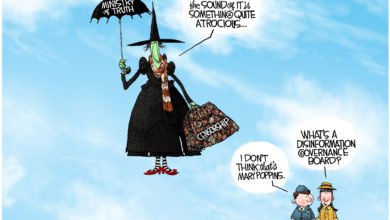Medal of Honor Monday: Army 2nd Lt. Harold Durham Jr.
When his unit was overwhelmed in Vietnam, Army 2nd Lt. Harold Bascom Durham Jr. didn’t hesitate to unleash a barrage of artillery on the enemy to save the lives of his fellow soldiers. Durham didn’t survive to tell the tale, but his bravery was detailed to others by the men who were there with him. For his actions, he earned the Medal of Honor.
Durham was born Oct. 12, 1942, in Rocky Mount, North Carolina. That day, he earned the nickname he would go by for the rest of his life: Pinky, reportedly because the hospital where he was born ran out of blue blankets, so he received a pink one instead.
Within a few months of his birth, Durham’s father, a Marine World War II veteran, and his mother, Grace, moved the family to Tifton, Georgia, where they raised Durham and his two siblings, older brother John and younger sister Eugenia.
Durham, who was known to be charming, engaging and kind, graduated from high school in May 1960. Military records show that he moved to Durango, Colorado, in December of that year. While in the state, he studied at Fort Lewis A&M College (now Fort Lewis College) and worked in the hotel industry before moving back home to Georgia in September 1963.
When Durham’s brother joined the Army, he decided to do the same, enlisting in February 1964. While he was doing a tour of Vietnam as a helicopter and airplane mechanic, he accepted an offer to go to Field Artillery Officer Candidate School, according to a 1999 article in the Rocky Mount Telegram. After receiving his commission in December 1966, Durham volunteered to go back to Vietnam. The Army obliged, and he returned to the embattled country in September 1967, the Telegram said.
Durham was a member of the 1st Infantry Division’s 15th Field Artillery Regiment, but on Oct. 17, 1967, he was serving as a forward observer with Company D of the 2nd Battalion, 28th Infantry Division, about 56 miles northwest of Saigon. Their goal was to do reconnaissance in the area, and Durham’s job was to plan and radio in requests for artillery fire to support infantry soldiers.
What they didn’t know was that they were walking into a Viet Cong stronghold.
Around 10:15 a.m., Durham’s battalion was ambushed by a well-camouflaged enemy force that outnumbered them as much as 10 to one. The young second lieutenant quickly moved into an exposed position so he could adjust supporting artillery fire on the enemy fighters.
During a brief lull, Durham treated wounded men around him despite being the target of heavy sniper fire. A few minutes later, he learned that the forward observer for Company A, which was bearing the brunt of the attack, had been killed. Later, he would learn that entire company had been wiped out.
Durham quickly moved to take the place of the fallen forward observer. As he was getting into place, enemy soldiers blew up a claymore mine near him, causing severe injuries to his head and impairing his vision. Despite the intense pain, Durham continued to direct supporting artillery fire on the enemy and even used his own weapon to support the infantrymen around him. At one point, when the enemy was really pressing the attack, Durham called for supporting fire to come down almost directly on his position.
It was only after the insurgents were driven back twice — with many dead and wounded left in their wake — that Durham allowed himself to be taken to a secondary defensive position.
“[Company commander] Lt. [Clark] Welch remembers seeing the brave artillery lieutenant pressing the ‘press-to-talk’ button switch on his radio handset with the stub of his wrist, because his hand had been blown off,” retired Brig. Gen. James E. Shelton, the operations officer that day, wrote in “The Beast Was Out There,” a book about the battle, which became known as the Battle of Ong Thanh.
Even though he was extremely weak, Durham continued to call artillery fire on the enemy and refused to find cover. Instead, he positioned himself in a small clearing that gave him a better vantage point of the enemy’s location so he could adjust artillery fire more accurately. But quickly, he was hit by enemy machine gun fire.
As Durham lay on the ground near death, he saw two Viet Cong fighters approaching and shooting defenseless injured soldiers. Mustering his last bit of strength, he shouted a warning to a nearby soldier, who was able to kill the two enemy fighters.
The 25-year-old died soon after that. The radio handset he’d used to call in support fire was still in his hand.
According to Army records, Durham was one of 56 U.S. and South Vietnamese soldiers killed that day; 75 more were wounded, and two were declared missing. Durham’s efforts likely kept those numbers from being higher.
For his bravery, Durham posthumously received the Medal of Honor. The nation’s highest award for valor was given to his mother on Oct. 31, 1969, by Vice President Spiro Agnew and Gen. William Westmoreland, the Army’s chief of staff. Unfortunately, Durham’s father died the same year his son did, and he never knew of his son’s honor.
Durham was buried in Oakridge Cemetery in his hometown.
His name has not been forgotten. Fort Sill’s Artillery Officer Candidate School Hall of Fame was named Durham Hall in his honor in 1999. In October 2016, the Abraham Baldwin Agricultural College in Tifton created the Freedom Gallery as a tribute to him.
This article is part of a weekly series called “Medal of Honor Monday,” in which we highlight one of the more than 3,500 Medal of Honor recipients who have earned the U.S. military’s highest medal for valor.
Source: Department of Defense
Content created by Conservative Daily News is available for re-publication without charge under the Creative Commons license. Visit our syndication page for details.




